1
2
3
4
5
6
7
8
9
10
11
12
13
14
15
16
17
18
19
20
21
22
23
24
25
26
27
28
29
30
31
32
33
34
35
36
37
38
39
40
41
42
43
44
45
46
47
48
49
50
51
52
53
54
55
56
57
58
59
60
61
62
63
64
65
66
67
68
69
70
71
72
73
74
75
76
77
78
79
80
81
82
83
84
85
86
87
88
89
90
91
92
93
94
95
96
97
98
99
100
101
102
103
104
105
106
107
108
109
110
111
112
113
114
115
116
117
118
119
120
121
122
123
124
125
126
|
+++
date = 2021-03-28
title = "Vaporware vs. Outrun"
description = ""
draft = false
+++
# Overview
When it comes to an aesthetic that originated primarily online, there tends to
be a lot of confusion around what falls into each specific genre. This post
discusses Vaporwave and Outrun, which have become almost synonymous in the minds
of those online who aren't hardcore into these genres of media. More
specifically, Outrun is largely an unknown term while all aesthetics in these
two genres are usually attributed to Vaporwave. For example, take a look at the
image search results for Vaporwave: the results include **a lot** of
Outrun-themed images. You'll find a similar trend almost everywhere.
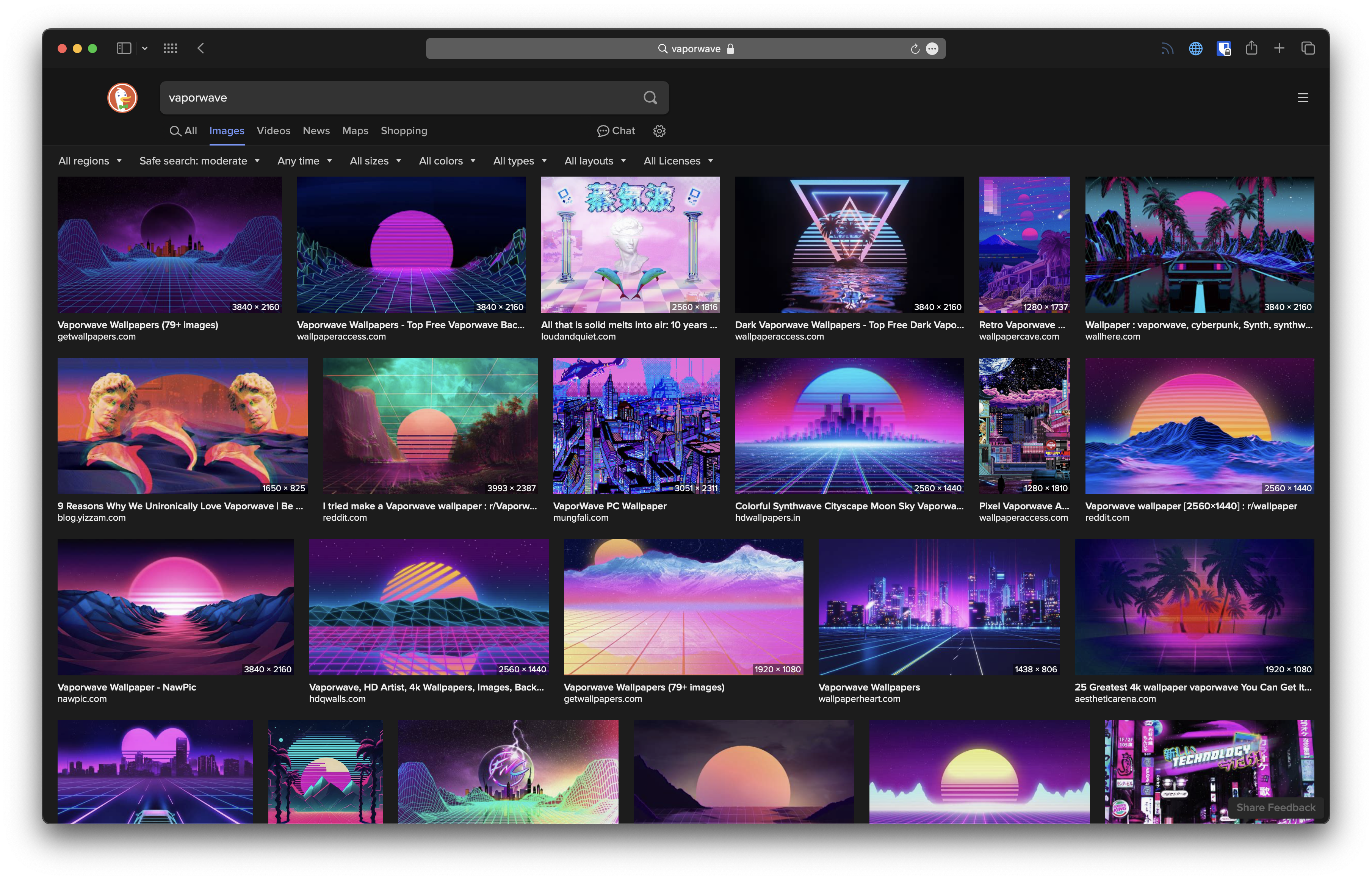
# Vaporwave

Okay, so what is Vaporwave? I'm going to just copy-and-paste some general info
from the Wikipedia article on
[Vaporwave](https://en.wikipedia.org/wiki/Vaporwave), so that I'm not repeating
everything you can already search for online:
> Vaporwave is a microgenre of electronic music, a visual art style, and an
> Internet meme that emerged in the early 2010s. It is defined partly by its
> slowed-down, chopped and screwed samples of smooth jazz, elevator, R&B, and
> lounge music from the 1980s and 1990s. The surrounding subculture is sometimes
> associated with an ambiguous or satirical take on consumer capitalism and pop
> culture, and tends to be characterized by a nostalgic or surrealist engagement
> with the popular entertainment, technology and advertising of previous
> decades. Visually, it incorporates early Internet imagery, late 1990s web
> design, glitch art, anime, 3D-rendered objects, and cyberpunk tropes in its
> cover artwork and music videos.
This is an excellent summary, and it helps address my point here: there are
specific aspects that make Vaporwave unique:
## Time Frame
The time frame for references, logos, etc. focuses mostly on the 1990s in
Vaporwave. You'll see old school Pepsi logos, Microsoft 95 screens, tropical
plants, classic marble sculptures, and many references from Japan's influence in
the 90s.
## Art
The color scheme is generally a soft, light palette that uses pastel colors. The
backdrop will often be in a light-pink or teal blue.
## Music
The musical genre of Vaporwave incorporates soft tunes, lounge music, and sound
effects that will make the listener reminisce of the 90s. The sounds of the
genre are generally slower-paced and calming. The major breakthrough artist for
Vaporwave was [Macintosh Plus](https://en.wikipedia.org/wiki/Vektroid), who
released the album [Floral
Shoppe](https://archive.org/details/MACINTOSHPLUS-FLORALSHOPPE_complete) in
2011. Another more recent example is the artist
[sadbert](https://sadbert.bandcamp.com/), whose latest album incorporates the
upbeat tones of the 1999 Dilbert TV series.
Notice that Vaporwave doesn't include things like racing cars, futuristic
technology, chrome, or the deep orange/purple color scheme. Vaporwave is a focus
on the idyllic state of the world when technology was becoming common in
households, a reality that we have already experienced. Focus on the most
aesthetically-pleasing parts of that past is a large part of Vaporwave.
# Outrun
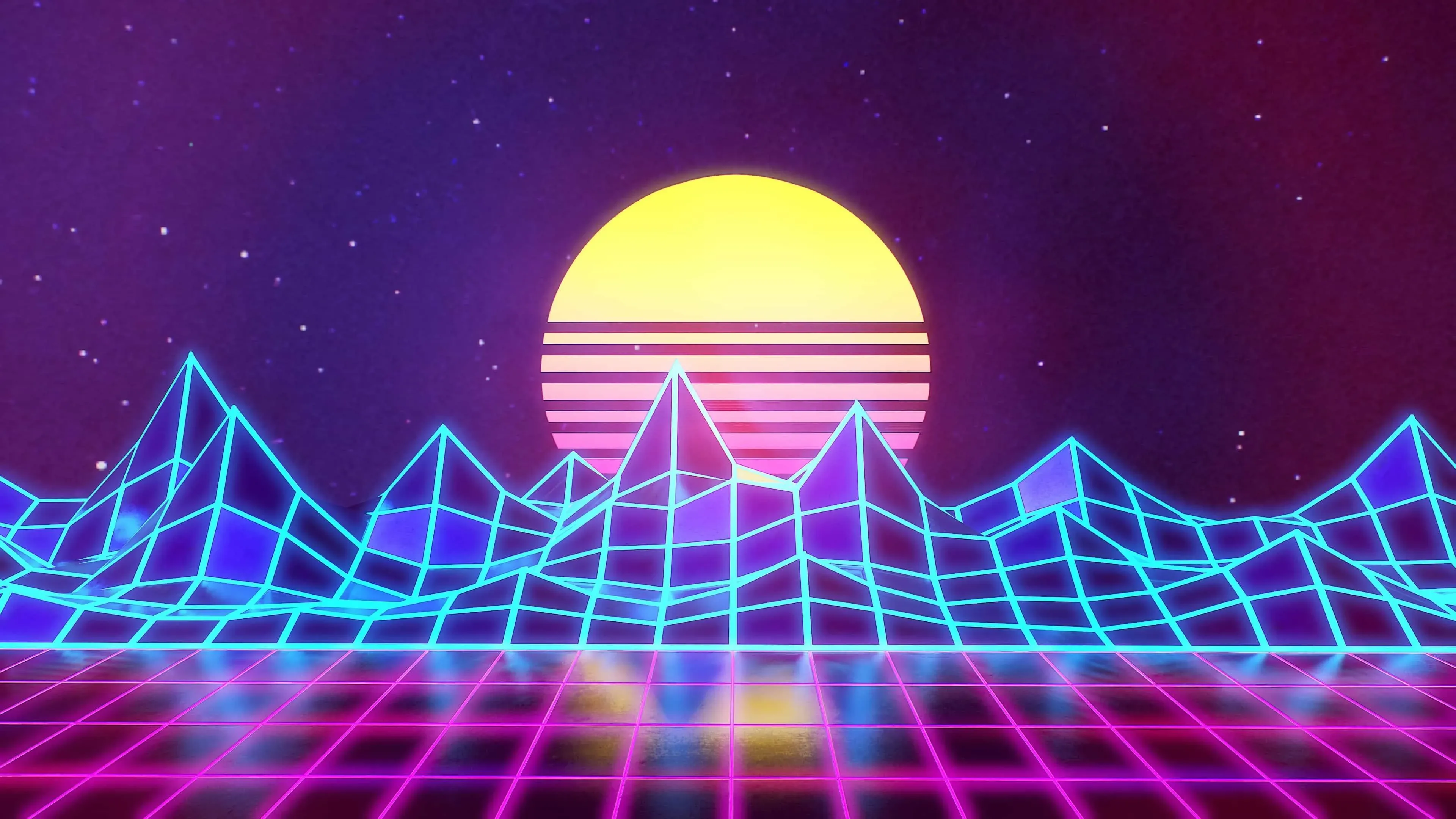
Now, let's get to Outrun. This one is a little trickier since the genre has
largely been lumped under the Vaporwave title for so long. However, it stems
from the [Synthwave](https://en.wikipedia.org/wiki/Synthwave) music genre and is
likely named after the 1986 racer game, [Out
Run](https://en.wikipedia.org/wiki/Out_Run).
## Time Frame
Outrun can be thought of as a retro-futuristic aesthetic born from the 1980s.
## Art
The color scheme uses a very dark color palette with the main colors being deep
oranges, blues, and purples. Red edges are common around objects in Outrun art.
The background of the Outrun aesthetic is almost always a neon grid like you'd
expect to see in Tron or a 1980s arcade machine.
Classic sports cars, chrome robots, computer generated graphics and fonts, and
the occasional use of rain or palm trees can be found in Outrun art.
## Music
This aesthetic has a more aggressive and fast-paced style of music, which tends
to match the subject of the art in this aesthetic.
Outrun enthusiasts love what people in the 1980s thought the future would look
like. Take a look at a common video game discussed in Outrun circles, Far Cry 3:
Blood Dragon:
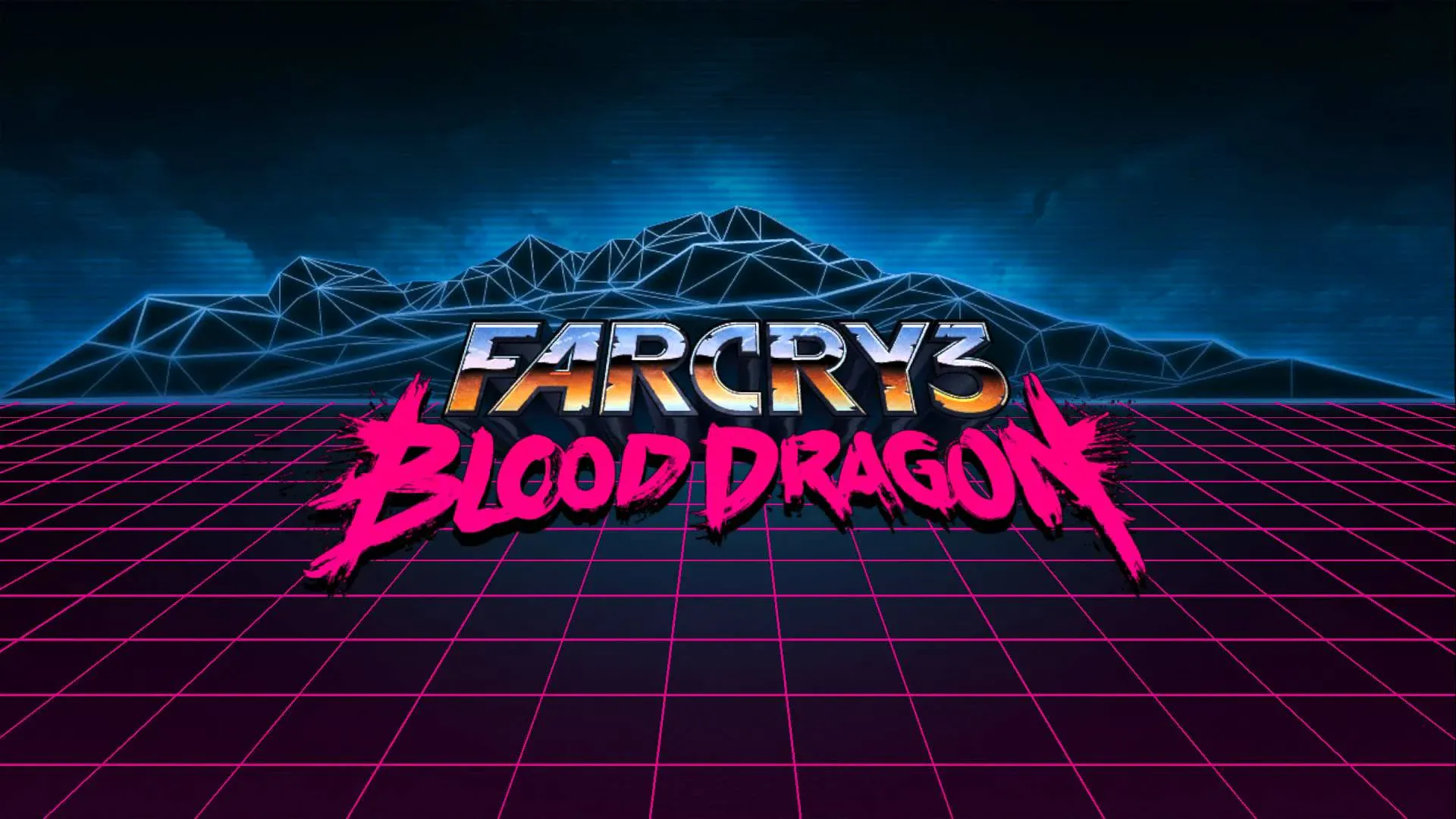
Another example that doesn't force the color scheme as hard as some online art
does is Kung Fury:
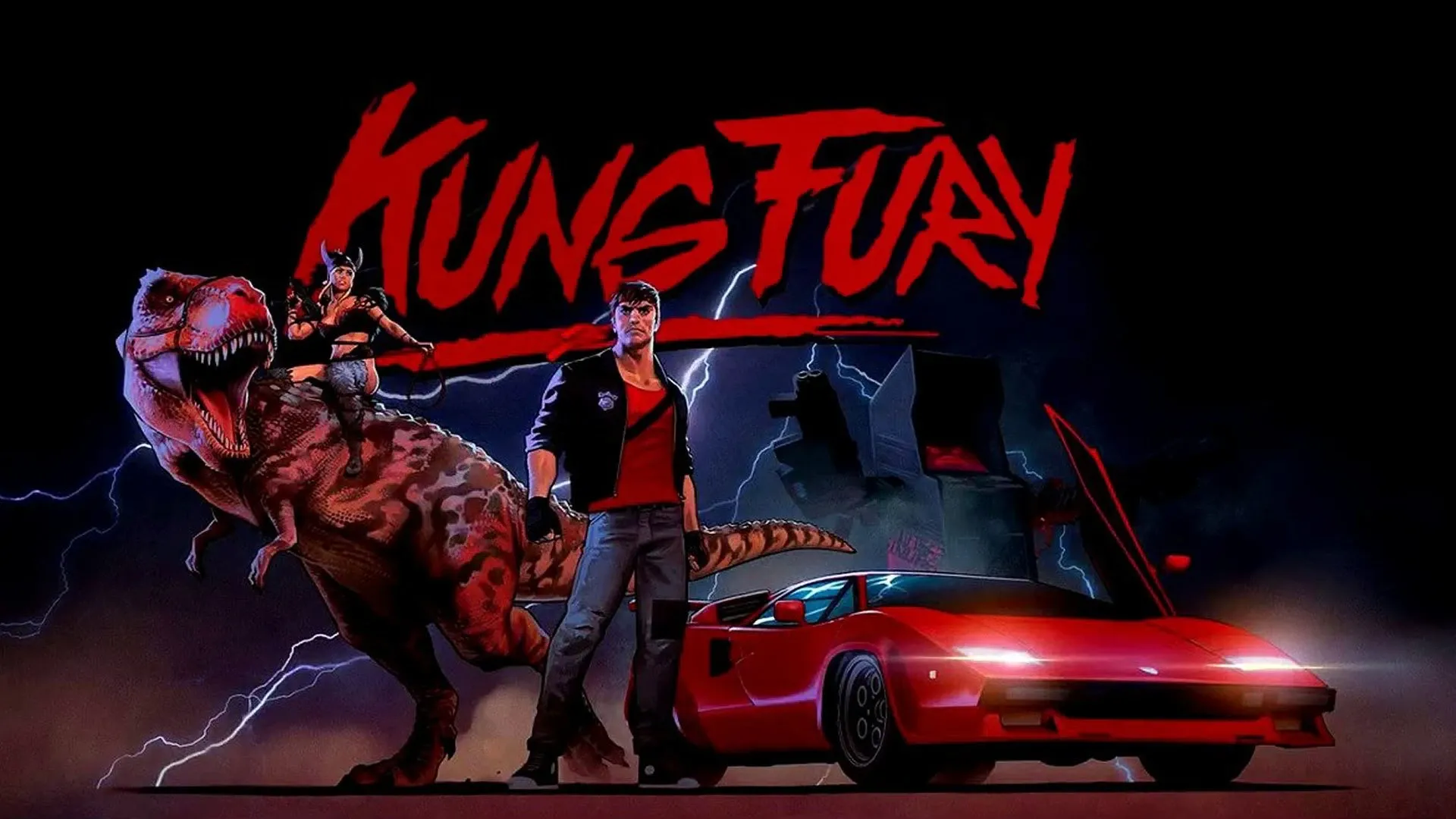
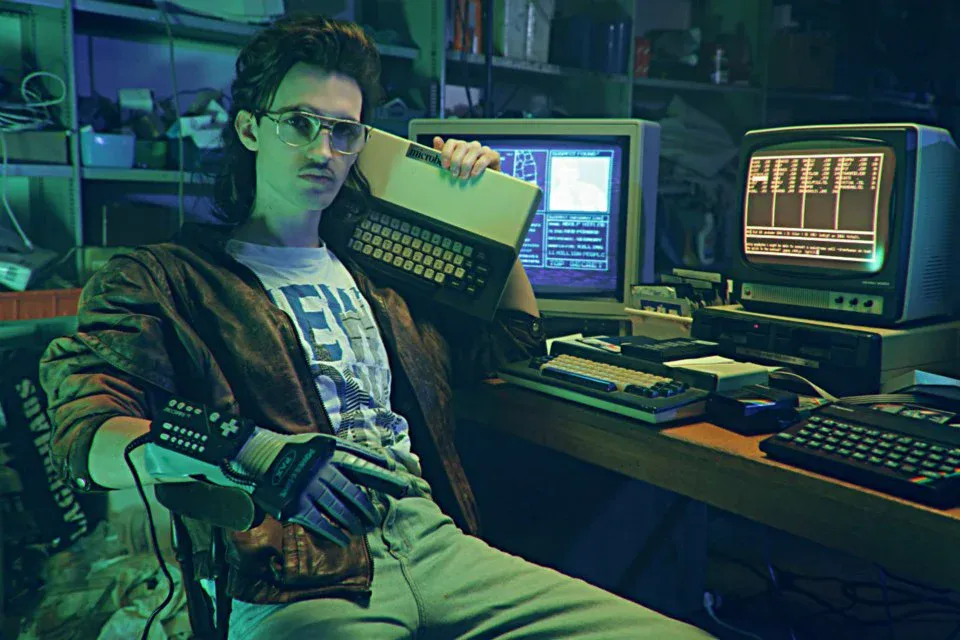
# Conclusion
While Vaporwave and Outrun share similarities, they are two distinct aesthetics
with many important distinctions. Someone who enjoys one may not necessarily
enjoy the other, so it's important to make sure we properly describe the
aesthetic we're looking for.
|
